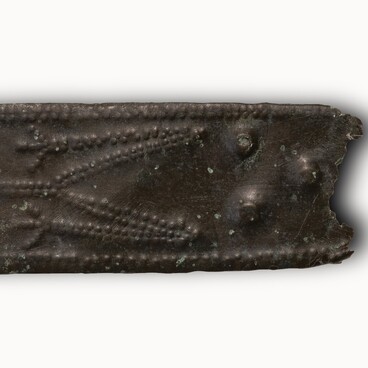The first telephones appeared in Moscow and Saint Petersburg in July 1882. The devices of the Swedish company L. M. Ericsson & Co. quickly became popular due to their high quality, loud, clear sound and affordable price. The AC 100 telephone with golden painting, presented at the Museum of the History of Obninsk, was considered one of the most beautiful devices of L. M. Ericsson & Co. The fashion for telephones turned them into works of art, and every company wanted to stand out.
The AC 100 was the first model that could be placed on a desk: until then only wall-mounted units had been produced. It was an open-case machine, known as a “skeleton telephone”. All of the phone’s inner components were clearly visible, and the device itself served as an additional decoration of the interior.
Until the beginning of the 20th century telephones were powered by a local battery, and later were connected to the wires of the telephone exchange, which greatly simplified and cheapened their design. There was no dial pad in the first devices, and communication was carried out through the “telephone ladies” at the telephone exchange.
To make a call, the inductor handle had to be rotated several times. The person called the number, and the operator manually connected his phone to the recipient with a plug. The recipient’s device would ring, the operator would make sure the connection was established, and would take the next call. When the call was over, the caller would turn the inductor knob again for the telephone operator to terminate the call.
The first telephones did not have the receiver and transmitter united in a single telephone handset. The ebonite covered earpieces were attached to the body with a long cable, and a carbon microphone with a bell was used for transmitting. To make it easier to use, it was located on top of a sliding rod with a rotatory mechanism.
A telephone set of this type was installed in the Turliki estate in the Kaluga Region, which belonged to the public figure, publicist and writer Viktor Petrovich Obninsky. The Obninsky family lived in Turliky since 1901. Today the estate is called Turliki-Mikhailovskoe Manor, or Morozovskaya Dacha.
The AC 100 was the first model that could be placed on a desk: until then only wall-mounted units had been produced. It was an open-case machine, known as a “skeleton telephone”. All of the phone’s inner components were clearly visible, and the device itself served as an additional decoration of the interior.
Until the beginning of the 20th century telephones were powered by a local battery, and later were connected to the wires of the telephone exchange, which greatly simplified and cheapened their design. There was no dial pad in the first devices, and communication was carried out through the “telephone ladies” at the telephone exchange.
To make a call, the inductor handle had to be rotated several times. The person called the number, and the operator manually connected his phone to the recipient with a plug. The recipient’s device would ring, the operator would make sure the connection was established, and would take the next call. When the call was over, the caller would turn the inductor knob again for the telephone operator to terminate the call.
The first telephones did not have the receiver and transmitter united in a single telephone handset. The ebonite covered earpieces were attached to the body with a long cable, and a carbon microphone with a bell was used for transmitting. To make it easier to use, it was located on top of a sliding rod with a rotatory mechanism.
A telephone set of this type was installed in the Turliki estate in the Kaluga Region, which belonged to the public figure, publicist and writer Viktor Petrovich Obninsky. The Obninsky family lived in Turliky since 1901. Today the estate is called Turliki-Mikhailovskoe Manor, or Morozovskaya Dacha.


